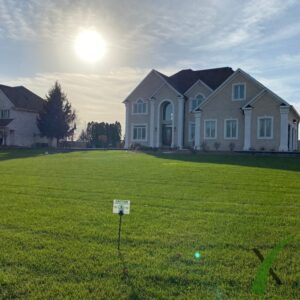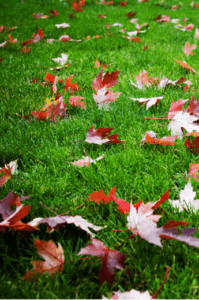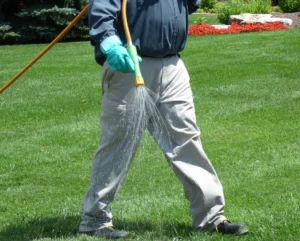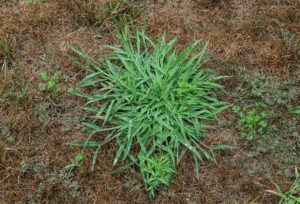Drive down any street in your neighborhood. Notice how, even in the heat of summer when lawns are under stress from insect, disease and environmental stress, some lawns just look better than others.
When your lawn is not visually equal to other, even customers of professional lawn care services question the value of their lawn programs, feeling their lawns just don’t look as thick and green as they expected them to be. When you consider the fact that lawns maintained on a program which includes regular fertilization but the most effective pest control strategies, there seems to be no good reason for the lawns ‘off color’ condition.
Don’t Stop Watering Your Lawn in The Fall
In almost every instance, the differentiating factor is water. Grass plants are more than 90% water. Take away even a portion of this life-giving substance and the plant’s normal growth processes slow down and, in extreme cases, stop altogether.

The Science Behind Watering Your Lawn
Photosynthesis, the building of cells, is completely dependent on the presence of moisture. No water, no photosynthesis and no growth. When plants slow or stop growing, the first thing that goes is the vibrant, green color we all want and expect…especially when we have signed on with a professional service to keep our lawns green and healthy all season long.
The fact is your lawn program whether designed and applied by you or a lawn care pro can only do so much. The objective of a serious lawn program is to supply necessary nutrients to the turf in a timely and measured way. This will help protect the lawn from predictable pests and promote healthy green growth.
How Much Water Does My Lawn Need in the Fall?
Supplying enough water to enable plants to grow optimally is up to you. Whether you have installed an automatic irrigation system or are manually watering the lawn, for best results, you need to ensure your lawn receives 1.0 to 1.5 inches of water per week. This water can come from either natural rainfall or irrigation. But it needs to be there week in and week out throughout the growing season.

Why It’s Important To Keep Watering Your Lawn in the Fall
Just like the human body, your grass needs food and water to survive. When insufficient water is applied to the lawn and growth slows, the result is almost never a dead lawn. The price you pay in poor watering, is simply an ‘off color’ lawn that looks drab and dull. Once the lawn received a good amount of water, the lawn will immediately begin the process of rebuilding.
In the past 30-40 seasons, dating back to 1989, severe droughts have caused tremendous damage to home lawns. Researchers at leading agricultural universities studied the situation in an effort to understand how those drought-stricken lawns would or would not recover. Results showed conclusively that when those same damaged lawns again received the right amount of water, they recovered at an amazing rate. Often, in less than one growing season, most were completely back to normal.
So don’t forget, if your lawn is looking dull try upping your watering approach. 9 times out of 10 your lawn will revert to the beautiful green lush lawn you want.

Join Our Free Lawn Care Newsletter
Stay Up to Date With The Latest News & Updates
* We don’t share your info with anyone ever.







